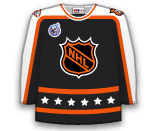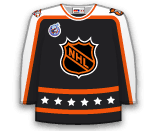Selleck, 26, is a 6-foot-2, 208 lbs. winger who has three goals and four assists (7 points) with 93 PIMs in 42 games with the San Antonio Rampage.

Selleck, 26, is a 6-foot-2, 208 lbs. winger who has three goals and four assists (7 points) with 93 PIMs in 42 games with the San Antonio Rampage.

Mancari, 28, is a 6-foot-4, 208 lbw. winger who was drafted 207th overall in 2004. Mancari has nine goals and 22 assists (31 points) with a plus-13 rating in 44 games with the Chicago Wolves (AHL).
Ott will likely play on the Blues third line and see significantly less minutes. He has nine goals and 11 assists in 59 games this season.

Halak, 28, has played 40 games for the Blues, posting a 24-9-4 record with a .917 save percentage and 2.23 goals against average. He has four shutouts this season, tied for second in the NHL, and is best known for leading the Montreal Canadiens to the Eastern Conference finals in 2010.

The 6-2, 231-pound Stewart has 15 goals and 11 assists in 58 games for the Blues this season after leading St. Louis last year with 18 goals and 36 points. Stewart, 26, was Colorado's first-round pick (18th overall) in 2006. In six NHL seasons, Stewart has 115 goals and 228 points in 377 games.

Miller and Ott will join the Blues in Phoenix, where they play Sunday. They were scratched by the Sabres just before the warmup for tonight's game against San Jose in First Niagara Center. Miller is 15-22-3 with a 2.72 GAA and .923 SV% with the Sabres, but receives a huge fantasy boost by going to the Blues.

Parlett, 24, is a 6-foot-1, 205-pound defenseman. He has played in 37 games with Springfield, recording four goals and 14 assists (18 points) this season.
Camper has one goal in three career NHL games. In 41 games with Providence (AHL) this season, he has eight goals and 23 assists (31 points) in 41 games.

Bouchard will report to the Rockford IceHogs (AHL), he has four goals and five assists, as well as a minus-9 rating, in 28 games with the Islanders. According to Pierre LeBrun, the Islanders retain 50 percent of the salary/cap hit for both Bouchard and Regin. Bouchard is on a one-year deal worth $2 million for this season.

Regin will report to the Blackhawks, he has played in 44 games with the Islanders this season; he has two goals and five assists and is a minus-10. Regin was selected by the Ottawa Senators in the third round of the 2004 NHL Entry Draft. According to Pierre LeBrun, the Islanders retain 50 percent of the salary/cap hit for both Bouchard and Regin. Regin is on a one-year deal worth $750,000.

Weise brings some extra grit to the the Habs lineup. He has three goals and nine assists (12 points) in 44 games this season.

The Canucks get a puck moving defenceman who has 11 assists and minus-4 rating in 46 games with the Habs. With Kevin Bieksa and Chris Tanev out, the Canucks were in need of a D-man and they get one at a cheap price.

Fraser has been a healthy scratch in Toronto for the last 12 games. After the Maple Leafs traded for Tim Gleason, Fraser became expendable. He was likely a candidate to be placed on waivers once Dave Bolland was healthy, this trade allows them to not have to make a roster move and gives them some extra cap-space. Fraser is a physical D-man who has one assist and a minus-8 rating in 19 games this season.

Crescenzi has one goal and one assist in 32 games with the Toronto Marlies. This is a minor league deal only.

Kozun was the 179th overall pick in 2009. He has 29 points (10G / 19A) in 43 games with Manchester this season. He has never played an NHL game.

Klein is a 6-foot-1, 199 lbs. defenseman who is a right handed shot. The Rangers were in need of a right handed defenseman, while the Predators have Shea Weber and Seth Jones who are much better players than Klein. Klein carries a $2.9 million US cap hit and is signed until the 2017-18 season. He has one goal, two assists and 75 hits to go along with his minus-11 rating in 47 games this season.

The Rangers had been trying to move Del Zotto for awhile now, but finally pulled the trigger this afternoon. Del Zotto carries a $2.55 million US cap hit but is a pending restricted free agent at the end of the season. Del Zotto has regressed since his 2011-12 season when we saw him total 41 points (10G / 31A) in 77 games. He has developed some bad habits in his own end of the rink which the Predators will attempt to fix. He has 11 points (2G / 9A) with a minus-5 rating in 42 games this season.

This is a minor league trade, no players are currently in the NHL or hold an fantasy value.
This is a minor league trade, no players are currently in the NHL or hold an fantasy value.

The Oilers shipped Devan Dubnyk out of town this afternoon and brought in Scrivens to compete with Ilya Bryzgalov for the starting gig. He is 7-5-4 with a 1.97 GAA and .931 SV% this season, but will find it a lot harder to play behind the Oilers than the Kings. However this helps his fantasy value as he could potentially start 25 games the remainder of the season if he can surpass Bryzgalov as the number-1.

NHL trades are decided between two or more team general managers. The front office’s job is building a winning team. Building a winning team means discussing trades with other general managers across the league.
During the NHL regular season, players can be traded up until the trade deadline. The deadline is the official cutoff point for when teams can no longer make moves between each other. Players can also be traded throughout the offseason.
Teams trade players in hockey for a variety of reasons, but generally, it is done to find success, whether that is in the short term or long term. Teams may trade their top players in search of draft picks if they are undergoing a rebuild, whereas contending teams may look to acquire talent to boost their playoff chances.
Trades are a common occurrence throughout the NHL and happen often. Some years feature less trades than others, it all depends on each teams needs and the availability of attractive talent.